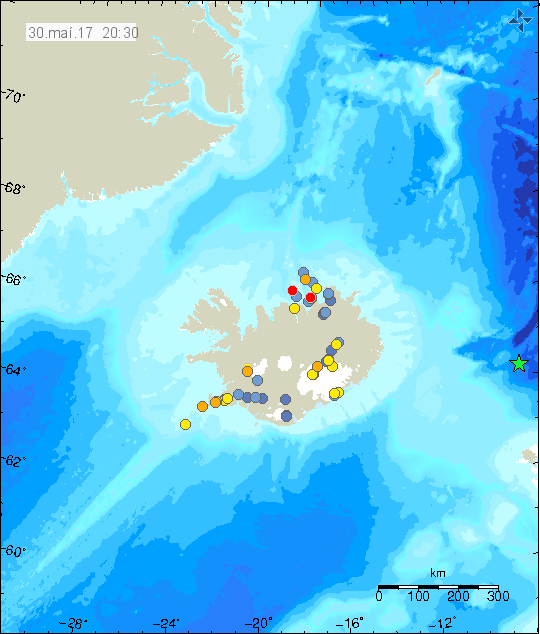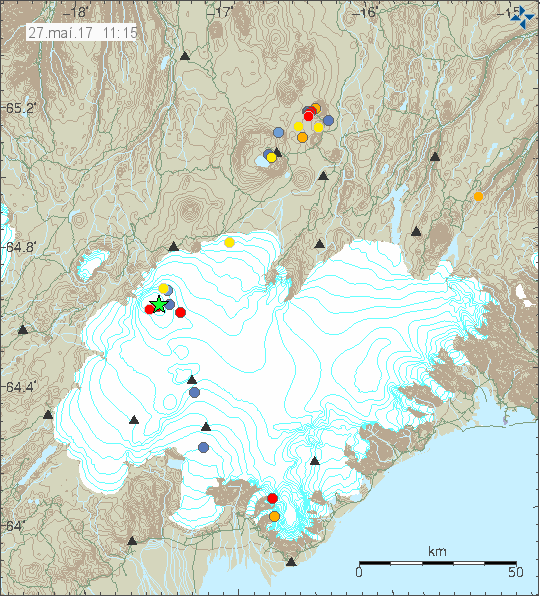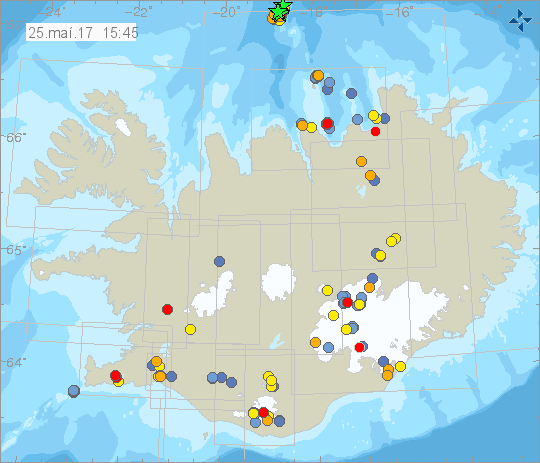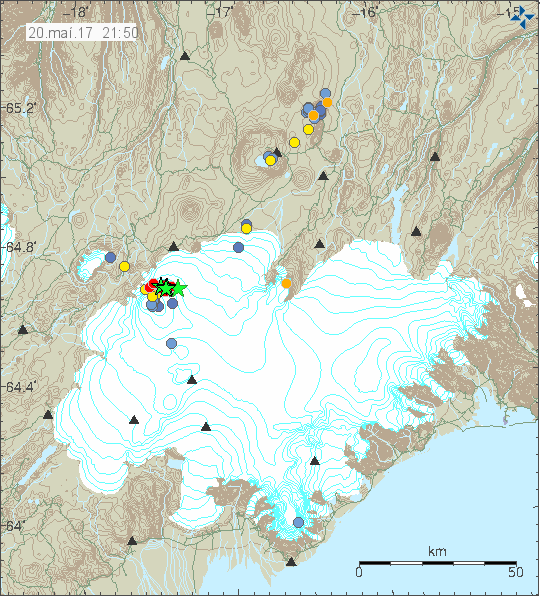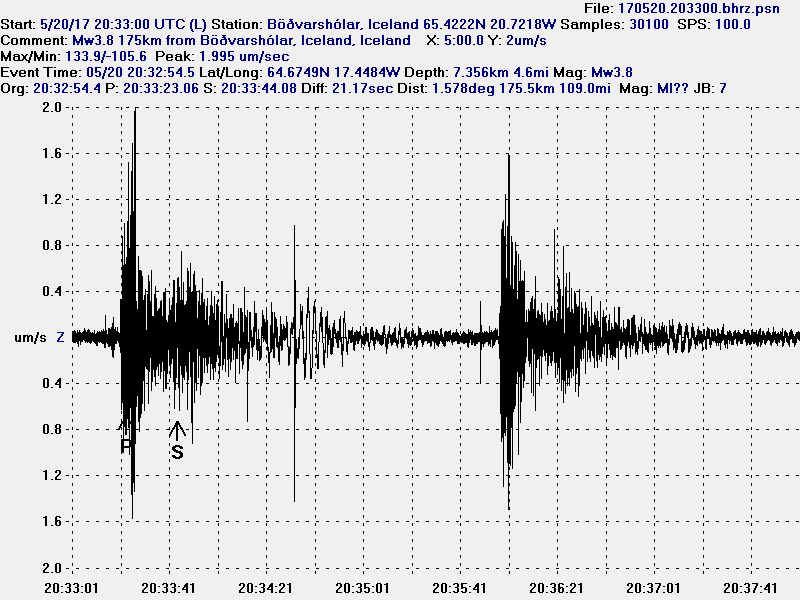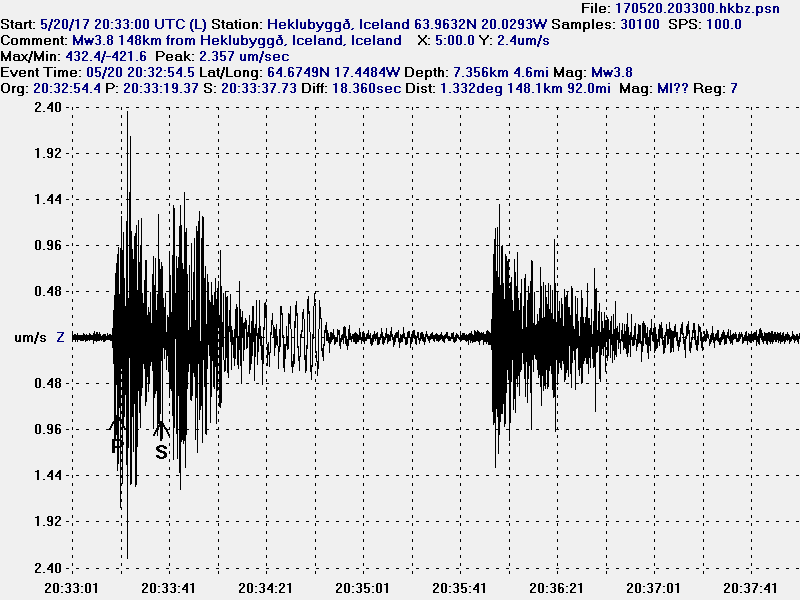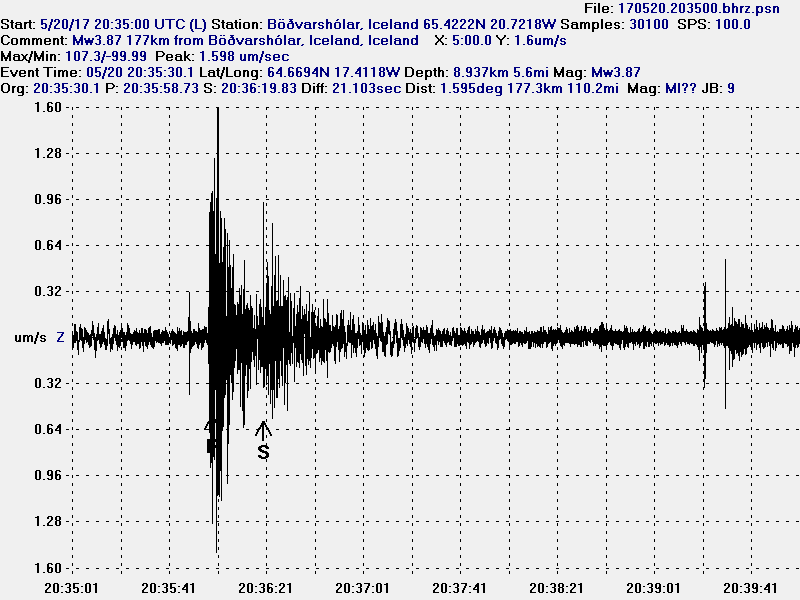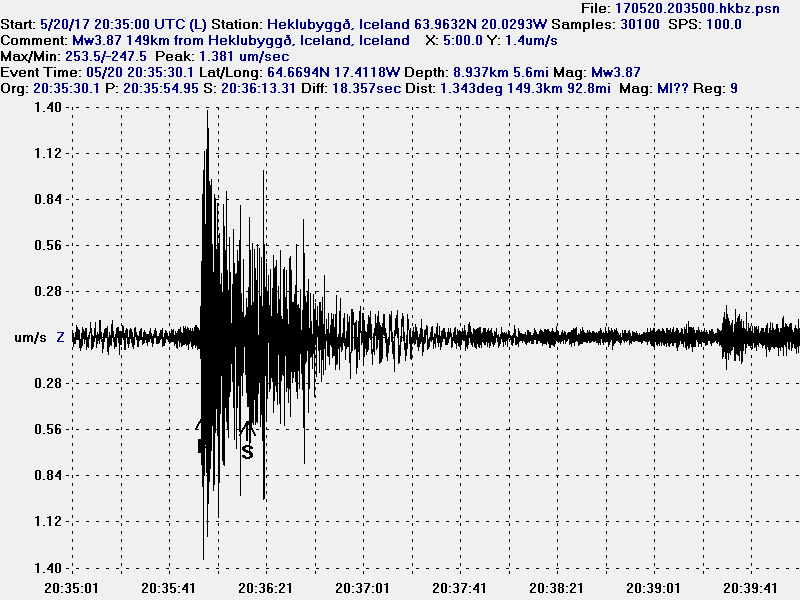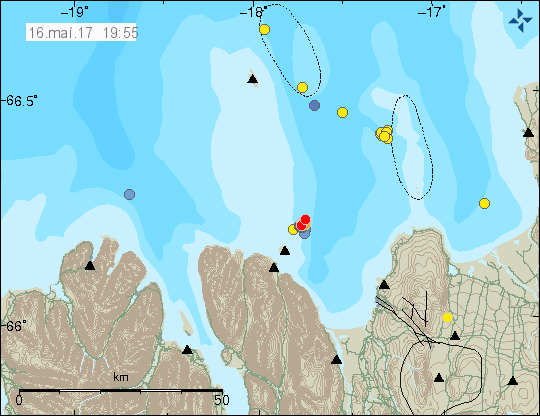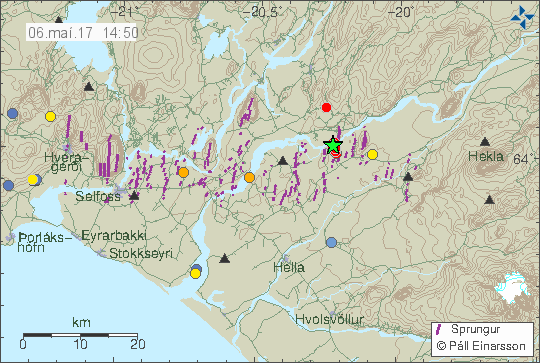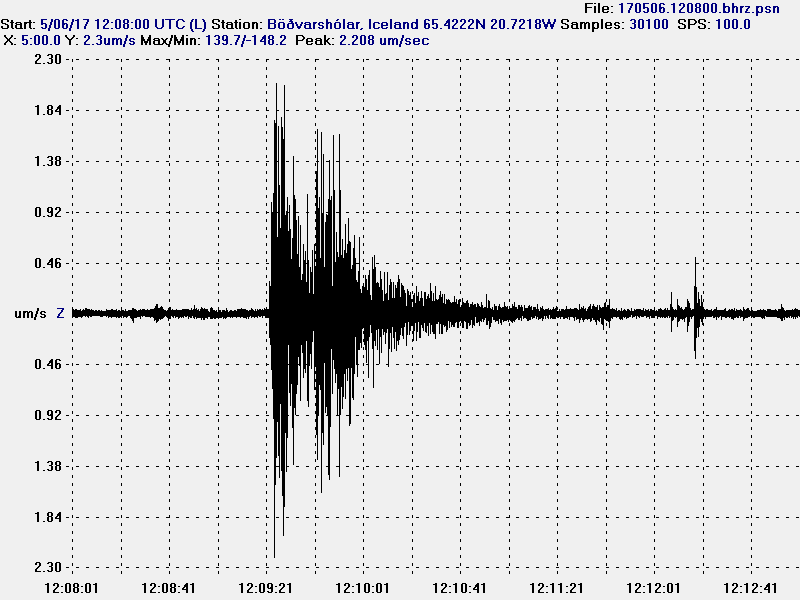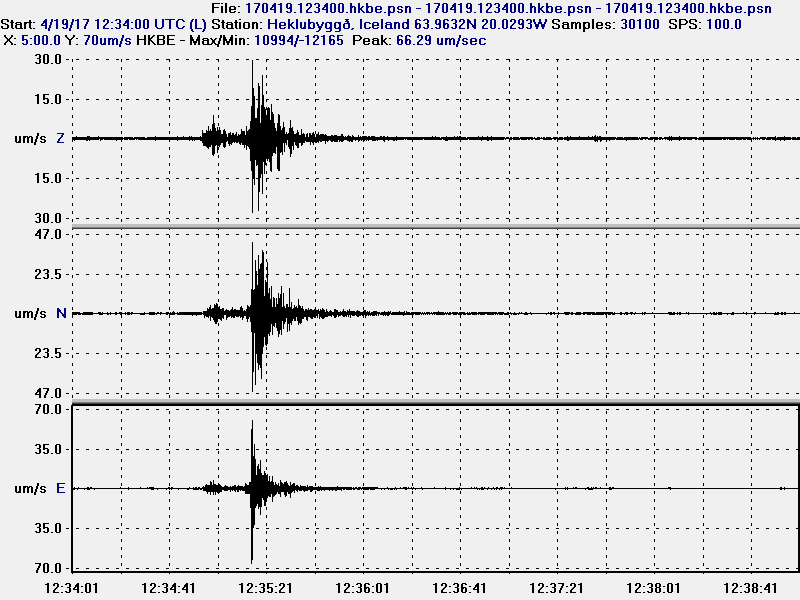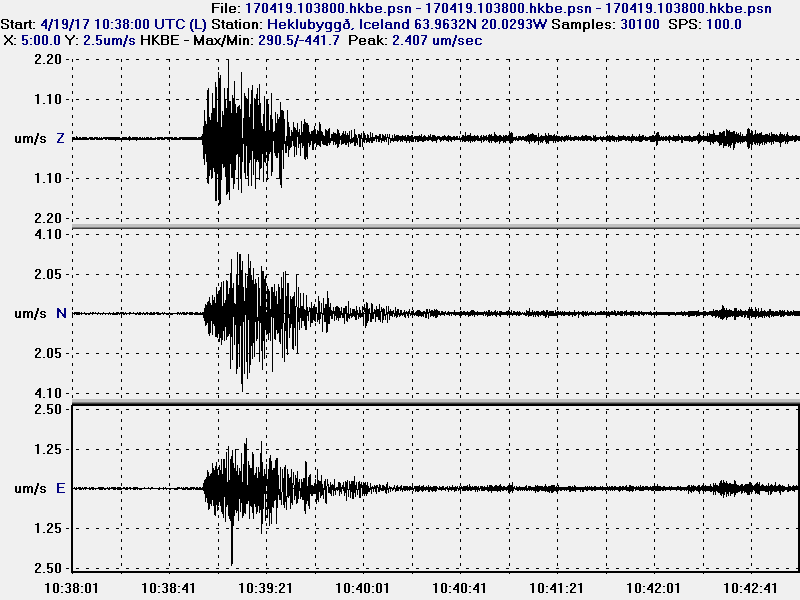Today (01-June-2017) a earthquake swarm took place in Bárðarbunga volcano. This earthquake swarm was in the regular location at north-east part of the caldera. Two earthquakes with magnitude 3,2 took place and one magnitude 3,6 earthquake happened. Other earthquakes in this activity where smaller in magnitude.
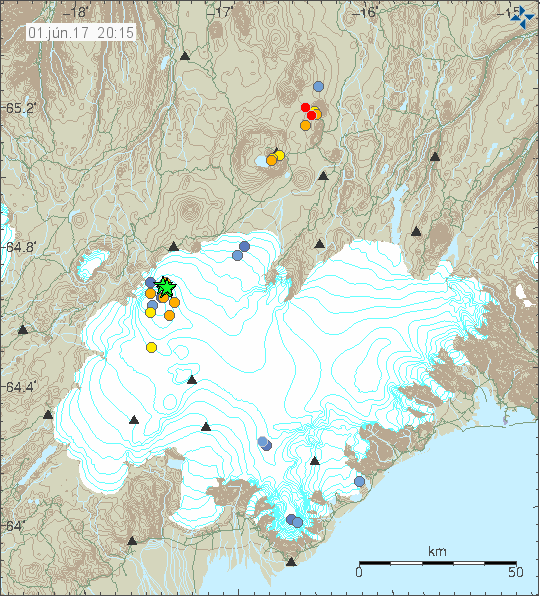
The earthquake activity in Bárðarbunga volcano today (01-June-2017). Copyright of this image belongs to Icelandic Met Office.
Earthquake activity in Bárðarbunga volcano is now getting close to weekly again. This suggest that magma inflow into the volcano is increasing again. What that means in the long term is unclear at this moment. Sometimes there is just one earthquake, but in most earthquake events there are now more than one earthquake with magnitude above 3,0.
Donations
Please remember to support my work. June is also going to be rather poor month for me due to dentist costs. I am hoping this is the last of it and July is going to be better. That still leaves me to make it trough June. Thanks for the support. 🙂

